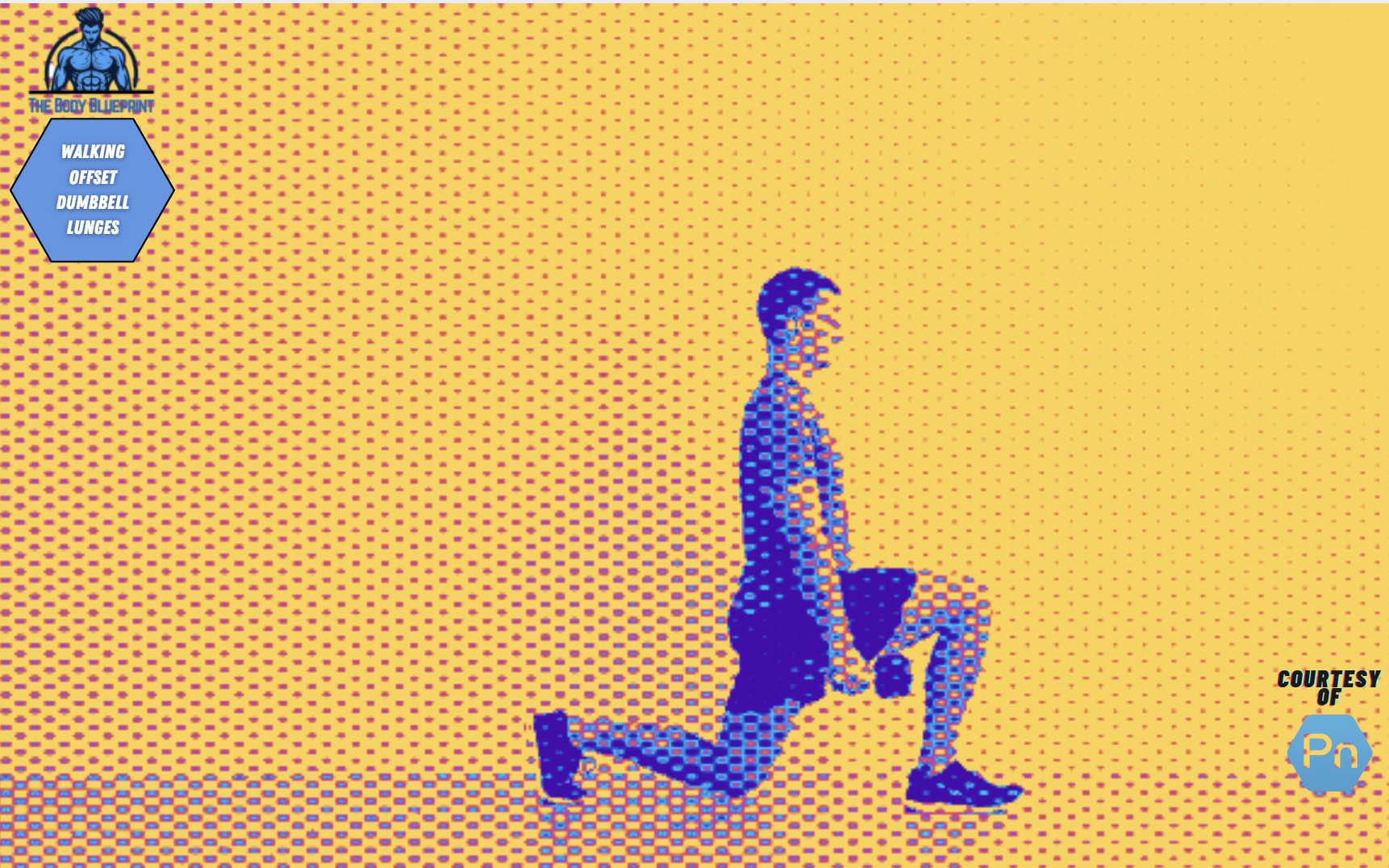When it comes to leveling up your lower-body game, walking offset dumbbell lunges don’t just work muscles—they refine balance, core strength, and stability. Let’s dive into why this move deserves a spot in your arsenal and how to nail it like a pro.
What Are Walking Offset Dumbbell Lunges?
Walking offset dumbbell lunges are a functional lower-body exercise where you hold a dumbbell in one hand (offset position) while performing walking lunges. This imbalance forces your core and stabilizing muscles to work overtime to keep you upright and controlled.
Why Does the Offset Matter?
The single-side weight distribution engages your obliques, enhances proprioception, and mimics real-life movements where balance is rarely evenly distributed.
| Feature | Benefit |
|---|---|
| Offset Weight | Activates core stabilizers |
| Walking Motion | Builds dynamic balance and coordination |
| Functional Pattern | Transfers to sports and daily life |
Muscles Worked in Walking Offset Dumbbell Lunges
This exercise isn’t just about quads and glutes—it’s a full-body stability challenge.
| Primary Muscles | Secondary Muscles | Stabilizers |
|---|---|---|
| Quadriceps | Hamstrings | Obliques, Core |
| Gluteus Maximus | Calves | Lower Back, Hip Flexors |
| Adductors (Inner Thigh) | Shoulders (Grip) |
You’ll feel your legs burn, but it’s the core activation and balance that really set this exercise apart.
Benefits of Walking Offset Dumbbell Lunges
1. Core Domination
Holding the dumbbell on one side creates rotational forces your core must resist. Hello, abs.
2. Functional Stability
This move translates directly to real-life movements like climbing stairs, carrying groceries, or balancing uneven loads.
3. Leg Gains With a Twist
Your legs get the classic lunge burn, but the instability adds a new level of strength training.
Performing Walking Offset Dumbbell Lunges
Step-by-Step Guide
- Pick Your Dumbbell: Start light until your form is dialed in. Hold the dumbbell in one hand by your side.
- Set Up: Stand tall with your feet hip-width apart. Engage your core and focus on your posture.
- Step Forward: Take a long step forward with one foot, lowering your back knee toward the ground.
- Maintain Balance: Keep your torso upright and your core tight. Avoid leaning toward the dumbbell.
- Push Through: Drive through your front heel and step forward with the back leg into the next lunge.
- Switch Sides: After completing one set, switch the dumbbell to the other hand and repeat.
Common Mistakes to Avoid
| Mistake | Fix |
|---|---|
| Leaning Toward the Dumbbell | Engage core and stay upright. |
| Overstepping | Take a step that keeps your knees safe. |
| Rushing the Movement | Focus on control, not speed. |
Progressions and Variations
Level It Up
- Offset Dumbbell Reverse Lunges: Focus on controlled, backward steps.
- Walking Barbell Lunges: Increase overall load and complexity.
- Offset Bulgarian Split Squats: Take it up a notch with elevated lunges.
Simplify It
- Bodyweight Walking Lunges: Start with no weight to nail the movement.
- Static Offset Lunges: Stay in place while performing the lunge.
Incorporating Walking Offset Dumbbell Lunges Into Your Routine
Programming Tips
- For Strength: 3–4 sets of 8–12 reps per side.
- For Endurance: 2–3 sets of 15–20 reps per side.
- As a Finisher: 2 sets to failure after your main lifts.
Pair With These Exercises
- Romanian Deadlifts
- Weighted Step-Ups
- Kettlebell Swings
Walking Offset Dumbbell Lunges vs. Traditional Lunges
| Feature | Offset Dumbbell Lunges | Traditional Lunges |
|---|---|---|
| Core Activation | High | Moderate |
| Balance Challenge | Significant | Minimal |
| Weight Distribution | Asymmetrical | Even |
Choose offset lunges for a functional twist, or stick with traditional lunges for simplicity. Both have their place in a balanced program.
FAQs About Walking Offset Dumbbell Lunges
Why Should I Use an Offset Weight?
An offset load enhances core engagement and mimics the instability of real-life scenarios, making your training more functional.
Can Beginners Do This Exercise?
Yes! Start with a light dumbbell or even no weight to get comfortable with the movement.
Should I Alternate Hands Mid-Set?
No. Complete one set holding the dumbbell on one side, then switch to the other hand for the next set.
Walking offset dumbbell lunges aren’t just an exercise—they’re a movement powerhouse. Add them to your routine, and you’ll build strength, balance, and coordination like never before. Now grab a dumbbell, hit the gym, and walk the path to functional fitness.

